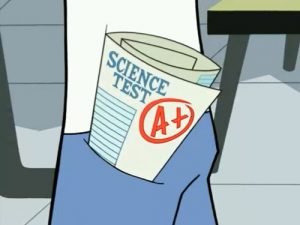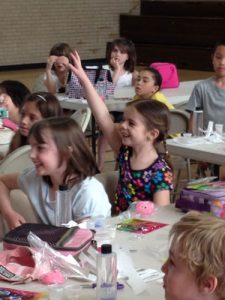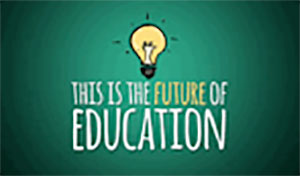School STEM Results
Join us and be part of STEM History!
A National Crisis

There are many national science teacher organizations made up of tens of thousands of science professionals that teach at every grade level. There are hundreds of science suppliers and manufacturers that sell tens of thousands of science education products. Many of these products are fun, exciting and cool. For 40 years we have had informative television shows about science. There are dozens of world class science museums that offer programs and services to tens of millions of visitors each year. There are many national publications all about science education. There are hundreds of trade shows and conferences all for the benefit of training and motivating teachers to help them in their classrooms. There are hundreds of for profit science enrichment companies that demonstrate science experiments at schools. There are hundreds of articles written by knowledgeable science writers that appear every day of the year showing teachers how to teach science better and more effectively. There are new national curriculum standards of science that effect 60 million elementary school children.


With thousands of STEM sources why is it that children never increase their science skills?

“The simple truth is that we are teaching science the wrong way”

Even with all these people, products and services nothing ever seems to change the science attitudes, skills and knowledge level of children. One reason is that few organizations have experience with the dynamic motivational training program “Management By Objective” which can create an environment of high level learning. Many people thought that Bill Nye the Science Guy had the right information and approach to teaching science. He had the right information but the wrong approach because he was unable to get children to be more than just passive participants. The fact is that 60% of the 30 million children here in the U.S. age 6 – 12 either fail or need improvement in science. In urban schools that number jumps up to 90%. Here in Massachusetts we have had a state standardized science test at 3 grade levels for 15 years. Massachusetts is ranked near the top for state test scores. During these 15 years Massachusetts has spent millions of hours and billions of dollars teaching science and hoping that children would be smarter and test better. Guess what? Massachusetts science test scores are actually lower than they were 15 years ago.


A Breakout New STEM Opportunity
Here is the breakthrough opportunity that can change everything about the way students learn about science.
After 27 years of hands-on teaching at over 1,000 schools we found the key to solving how children will learn STEM more effectively. It was a combination of three things – working hands-on with over 1.2 million children in a very real way, a brand new product that we developed, and participating as an exhibitor at a state science teacher organization conference. In 2015 we exhibited at the Massachusetts Science Teachers Association’s (MAST) annual conference. Our staff demonstrated our product to over 600 middle school and high school science teachers over a two day period. The findings were startling. Of course these are good teachers, excited about science and all trying to help their students to learn. But, have you ever heard the expression “practice makes perfect?” Well the expression is wrong. It is actually “practice makes permanent.”
What that means is that most people believe if we just teach the same way over and over again everyone will learn the right way. But, what if we teach them the wrong things or the wrong way? What happens is that all that practice turns into the wrong permanent way of doing things.


Our STEM Results
Here’s the analysis and findings. Every teacher, no matter what grade level they taught, was asked these friendly questions –
- In one word what would your best students say is the definition of science?
- What would their best students say is the definition of a scientist?
- Could their students name 3 famous scientists from the past 25 years?
Could they name a science education product that they thought would offer the best long term benefit for students?
After they gave us the answers we asked them the exact same questions. Now of course these teachers were in and out of science sessions so we were as brief as possible so that they could understand our product yet still enjoy the rest of the exhibition hall.
Teachers responded that regarding their own students:
- 80% would not be able to give a correct definition
- 95% would not be able to define what a scientist is
- 99% would not be able to identify 3 famous scientists from the past 25 years
- 100% would not be able to identify the best science education product
It gets worse:
Regarding the responses by the teachers:
- 50% did not give the correct definition
- 70% were not able to correctly define what a scientist is
- 90% could not quickly give us the names of 3 famous scientists from the past 25 years
- Finally, 100% could not identify any science education product that would have the most benefit for children learning about science
Now of course if they had been given a lot more time the teachers would probably have thought of people like Bill Gates and Steve Jobs. But, how can we possibly teach science if we don’t know what it is, what scientists do, or know the names of current people in numerous science professions that effect our lives dramatically every day? Why is it that the students can name all the celebrity Kardashian sisters and the starting lineups of their local sports teams but not name people who make their lives have meaning and value?
May we mention that the current President of this local science teachers association with over 30 years of teaching experience at the middle and high school levels failed on every answer?
So now you may be wondering what the results mean. As Executive Director I have been in the trenches teaching science successfully for 27 years. To tell you the truth I have worked hands-on with more students than anyone else in the country – that’s 1.5 million children (that calculates to over 1,000 each and every week). I work hands-on with more children in a week than the average teacher does in their entire career. I run a public charity based in the Boston area called the Top Secret Kids Corporation (also known as Top Secret Science & Math). We have created a small global network of 350 science professionals that have helped teach over 40 million children around the world. Each week we do dozens of programs at schools at every grade level. We don’t offer demonstrations or shows from a stage. Those types of offerings do not effectively increase attitudes, skills and knowledge (A.S.K.). Of course museums and shows are entertaining short term but rarely do they offer value long term. Every day we work directly with children and every one of our programs the students make and take home most of the experiments. We feel that it is the best way to teach science.
So how do we change everything about America’s stagnant science output? Too many decisions are made on curriculums and products from people who haven’t been in the trenches at all, or don’t understand business or how to build rapport with children. Too many executive boards or academics lack the hands-on strategy and experience that is absolutely critical for success.
“All of our Board of Directors are experienced current or former science teachers that have worked in our richly awarded Top Secret Kids Curriculum System”
In our organization we need to build rapport within seconds to create success. We need to understand children and how to create strategies that will allow them to learn differently than before. We need to be fun, funny and actually not sugar coat anything. There is a lot riding on our ability to inspire but that is our mission every day. In simple terms, unlike any other science product developed before it Scientist Trading Cards (STC) is making a dramatic and immediate change in the way science is taught and learned.
We figured out that children need to understand science, scientists and science careers so we created a revolutionary curriculum enhancing product. It is called Scientist Trading Cards. Kids know trading cards. They play with sports cards like baseball and football. They trade cards with classics like Pokemon and Magic – The Gathering. Scientist Trading Cards have all of these elements – a set of 250 cool and hip scientists that they won’t recognize at first because they were never taught that architects, electricians, inventors and chefs are scientists. Besides the cards we offer 50 fun, simple, hands-on science experiments online and 10 science games that they can play with their entire family or at school. Now, for the first time they will get the essential information about people who are making a huge difference and aspiring all of us to have better and richer lives. For the first time they can look up to someone important rather than wondering if it is more important to become a celebrity. And, for the first time they can play and learn with a product that will enhance skills for a lifetime. During our 2017 summer season we ran 50 week long camps and from it our children participants were so excited about the Scientist Trading Cards that they responded by researching and then creating over 20,000 of their own hand made famous scientist cards.

Dramatic 2021-2022 School Results
“Improvements can now take months not years!”
The Scientist Trading Cards (STC) is a new product introduced early in 2016. Since we have considerable hands-on experience at schools we have developed hundreds of relationships with teachers who use our services. To date the Top Secret Kids Corporation has sold 6,500 units. As an initial test we immediately offered to 25 schools in Massachusetts and New Hampshire, and 3 schools in Ireland (where one of our International Teacher Licensees is located) two free sets of cards for 1st and 3rd grade classes along with an enhanced curriculum that follows the current standards.
In our test we worked with both perfoming and underperforming schools. Unfortunately most STEM organizations work with only underperforming schools. Typically less science is taught in these schools. The reality is that just time alone should help benefit the short term advancement of these students. When you double the time spent in the classroom it only makes sense to assume that test scores will increase. But, the only way to really measure these organization’s abilities is to not just look at test scores but to also factor in other variables. Cost is normally prohibitive to bring in scientists so most STEM organizations need to work with large sponsors. Our costs are significantly lower than our competitors which dramatically saves both time and money and provides a system with better overall value.





